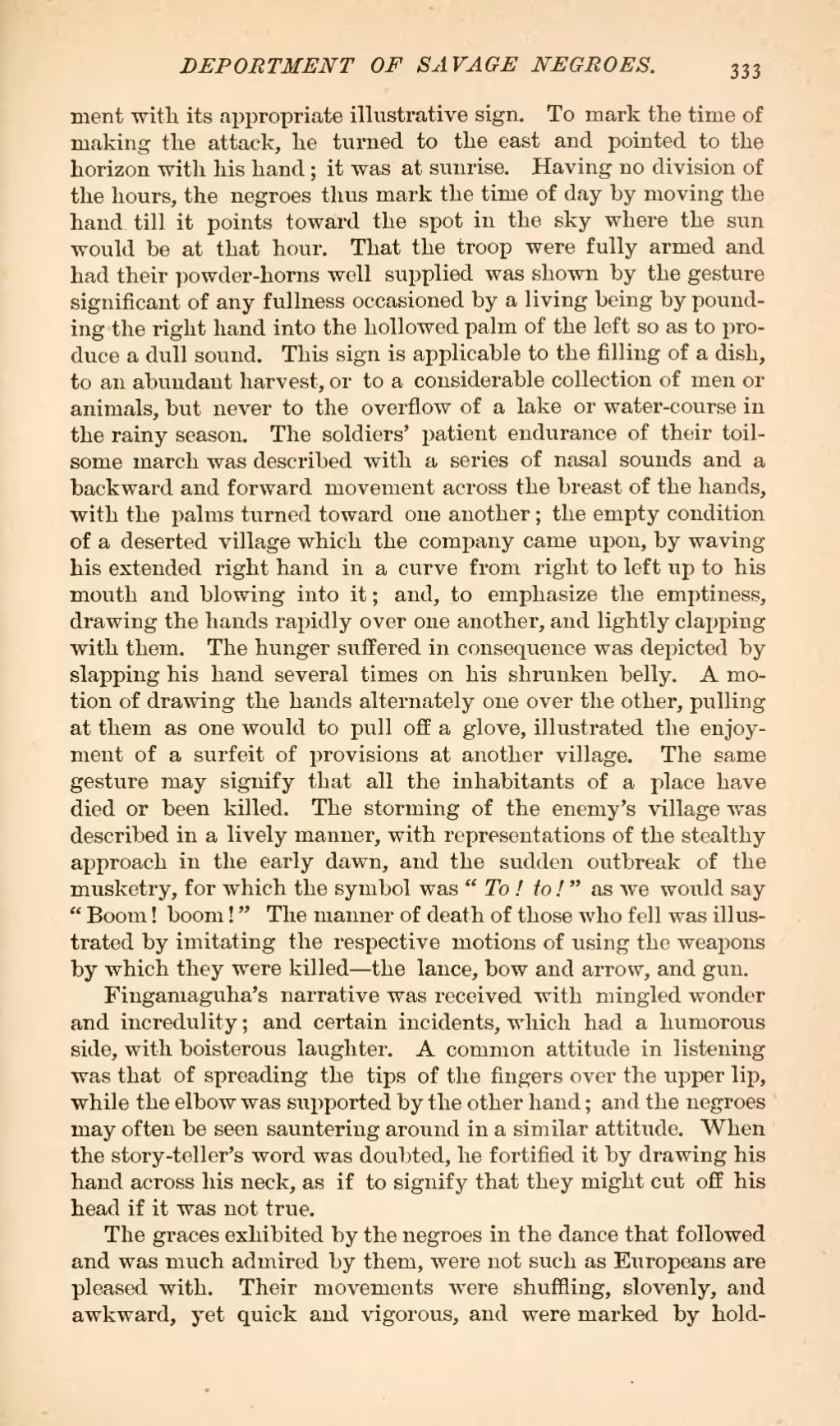ment with, its appropriate illustrative sign. To mark the time of making the attack, he turned to the east and pointed to the horizon with his hand; it was at sunrise. Having no division of the hours, the negroes thus mark the time of day by moving the hand, till it points toward the spot in the sky where the sun would be at that hour. That the troop were fully armed and had their powder-horns well supplied was shown by the gesture significant of any fullness occasioned by a living being by pounding the right hand into the hollowed palm of the left so as to produce a dull sound. This sign is applicable to the filling of a dish, to an abundant harvest, or to a considerable collection of men or animals, but never to the overflow of a lake or water-course in the rainy season. The soldiers' patient endurance of their toilsome march was described with a series of nasal sounds and a backward and forward movement across the breast of the hands, with the palnis turned toward one another; the empty condition of a deserted village which the company came upon, by waving his extended right hand in a curve from right to left up to his mouth and blowing into it; and, to emphasize the emptiness, drawing the hands rapidly over one another, and lightly clapping with them. The hunger suffered in consequence was depicted by slapping his hand several times on his shrunken belly. A motion of drawing the hands alternately one over the other, pulling at them as one would to pull off a glove, illustrated the enjoyment of a surfeit of provisions at another village. The same gesture may signify that all the inhabitants of a place have died or been killed. The storming of the enemy's village was described in a lively manner, with representations of the stealthy approach in the early dawn, and the sudden outbreak of the musketry, for which the symbol was "To! to!" as we would say "Boom! boom!" The manner of death of those who fell was illustrated by imitating the respective motions of using the weapons by which they were killed—the lance, bow and arrow, and gun.
Fingamaguha's narrative was received with mingled wonder and incredulity; and certain incidents, which had a humorous side, with boisterous laughter. A common attitude in listening was that of spreading the tips of the fingers over the upper lip, while the elbow was supported by the other hand; and the negroes may often be seen sauntering around in a similar attitude. When the story-teller's word was doubted, he fortified it by drawing his hand across his neck, as if to signify that they might cut off his head if it was not true.
The graces exhibited by the negroes in the dance that followed and was much admired by them, were not such as Europeans are pleased with. Their movements were shuffling, slovenly, and awkward, yet quick and vigorous, and were marked by hold-
